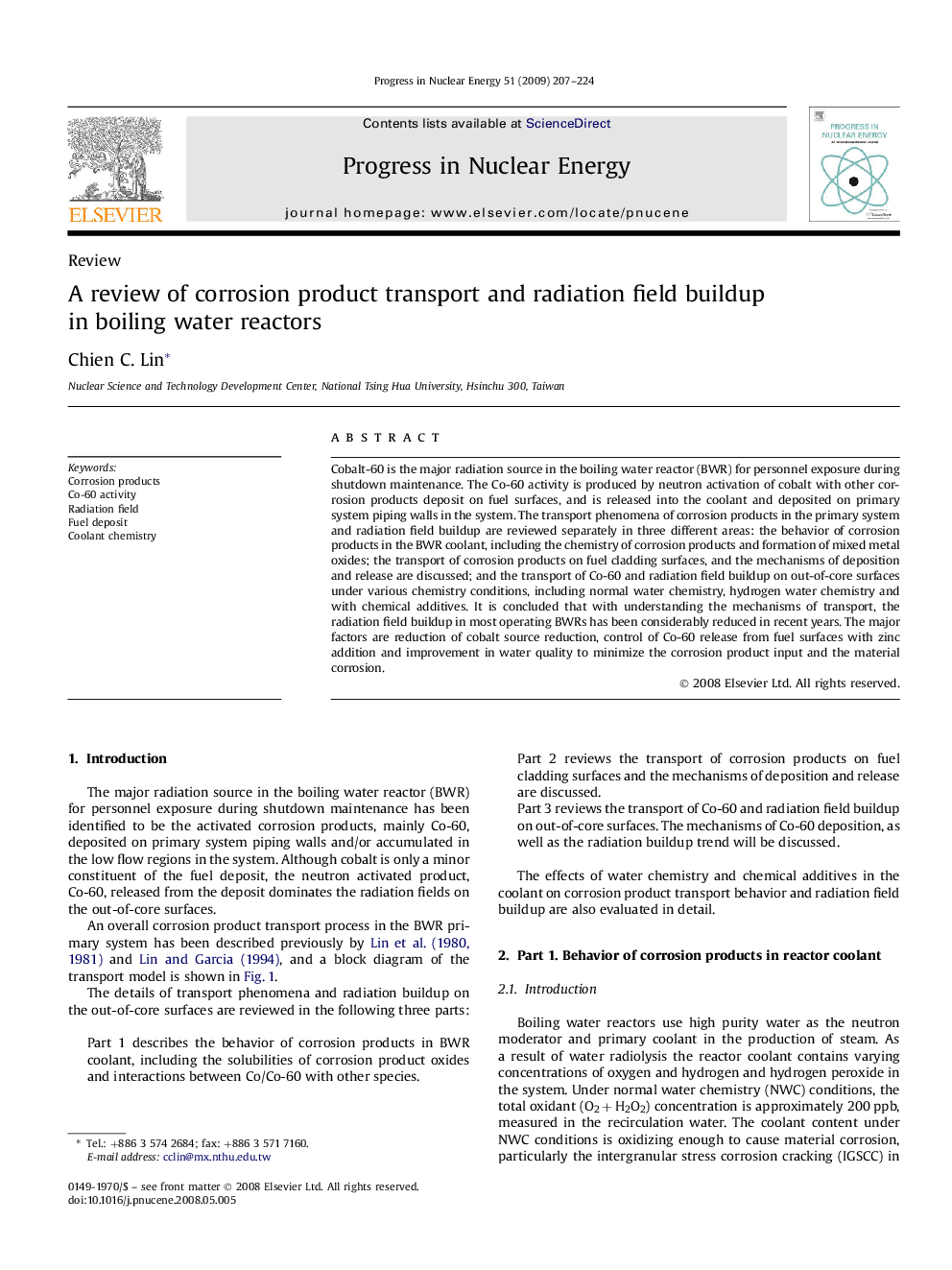| Article ID | Journal | Published Year | Pages | File Type |
|---|---|---|---|---|
| 1741118 | Progress in Nuclear Energy | 2009 | 18 Pages |
Cobalt-60 is the major radiation source in the boiling water reactor (BWR) for personnel exposure during shutdown maintenance. The Co-60 activity is produced by neutron activation of cobalt with other corrosion products deposit on fuel surfaces, and is released into the coolant and deposited on primary system piping walls in the system. The transport phenomena of corrosion products in the primary system and radiation field buildup are reviewed separately in three different areas: the behavior of corrosion products in the BWR coolant, including the chemistry of corrosion products and formation of mixed metal oxides; the transport of corrosion products on fuel cladding surfaces, and the mechanisms of deposition and release are discussed; and the transport of Co-60 and radiation field buildup on out-of-core surfaces under various chemistry conditions, including normal water chemistry, hydrogen water chemistry and with chemical additives. It is concluded that with understanding the mechanisms of transport, the radiation field buildup in most operating BWRs has been considerably reduced in recent years. The major factors are reduction of cobalt source reduction, control of Co-60 release from fuel surfaces with zinc addition and improvement in water quality to minimize the corrosion product input and the material corrosion.
